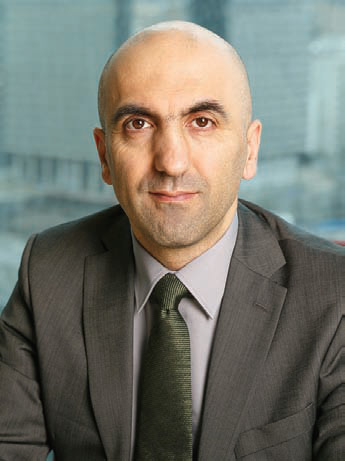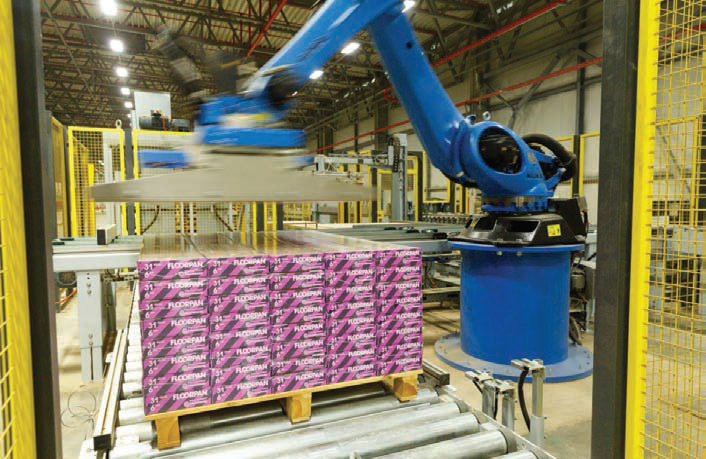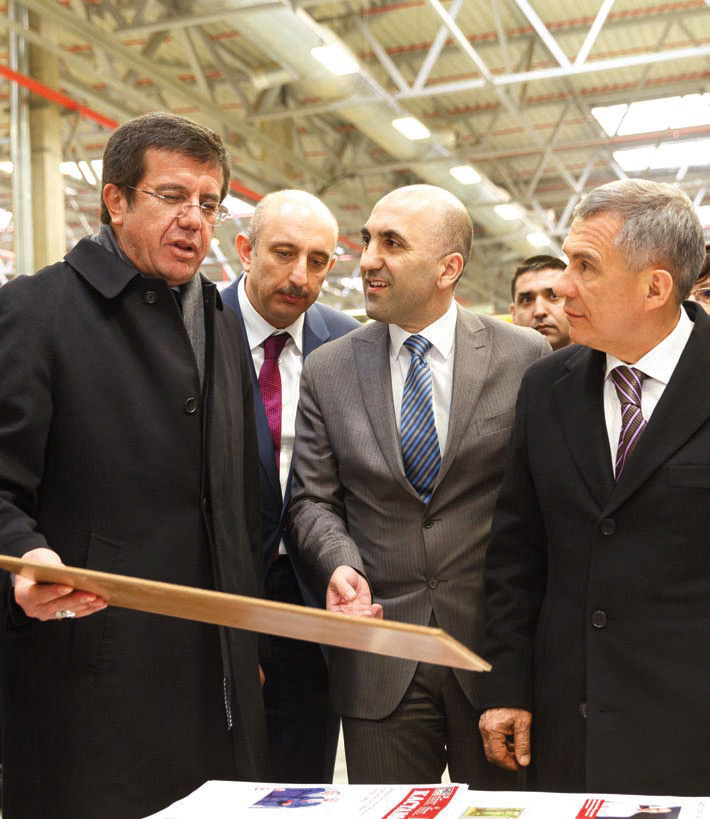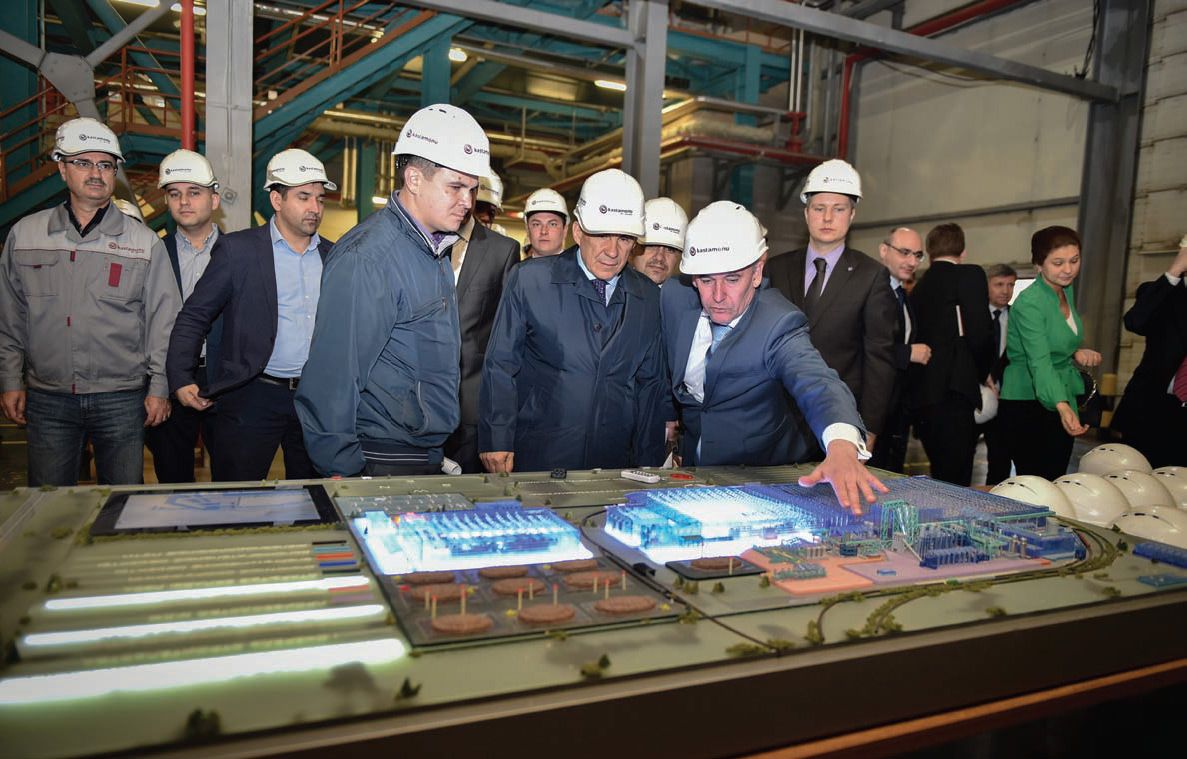Kastamonu expands In Russia
28 March 2018Turkish giant Kastamonu is already the largest producer of MDF in Russia. It does not intend to rest on its laurels, says WBPI correspondent Eugene Gerden
The Turkish panels giant Kastamonu is planning active expansion in the Russian panels market in the coming years. Increased production in its factory there will, it is hoped, lead to increased sales.
In recent years Kastamonu has been able to expand its sales in the Russian market, as well as its production there which is reflected by the current status of the company as Russia’s largest producer of MDF.
Its factory, in the Alabuga special economic zone in the Tatarstan Republic, one of the most economically developed regions of Russia, has two lines, the most recent of them commissioned in April 2016. Between them they have the capacity to produce a million cubic metres of MDF a year and constitute the biggest single-site MDF plant not only in Russia, but in the whole of Europe.
Kastamonu is also a leading exporter of boards from Russia. Last year the company started supplying its Russian-made panels to North America and China. According to Ali Kylich, general director of Kastamonu’s MDF plant in Russia, the company plans further expansion of the geography of its sales in the coming years.
“Currently up to 40% of the products manufactured by Kastamonu in Tatarstan are exported” said Mr Kylich. “The biggest demand is for MDF and for products based on MDF - laminate and glossy panels.” (Kastamonu has been a pioneer of the latter).
“The current situation provides the company an opportunity to successfully compete in markets of other countries, from the EU to China, where many competitors operate. Part of the products that Kastamonu sends to these markets are supplied from the Russian plant of the company.”
Inside Russia, Kastamonu has a 25% share of the domestic MDF market. The company also controls about 30% of the Russian market in laminate flooring; it plans further to increase these shares in the coming years.
Currently the majority of output of the Tatarstan plant goes to satisfy the needs of the recently established furniture cluster in the region. Forest cover in Tatarstan is estimated at only 17%. Despite this, the company says that it experiences no problems with the supply of raw material. Mr Kylich says that about 50% of raw wood purchased by the company for the needs of its factory is supplied locally. The remainder is imported from neighboring regions of Russia, including Udmurtia, Perm, and Kirov.
The commissioning of the second MDF line caused the company’s annual demand for raw materials to grow up to 1.3 million m3. Despite the increase, the Ministry of Forestry of Tatarstan believes the regional timber industry will be able to fully meet Kastamonu’s needs even in the long-term, given that the planned cutting area in Tatarstan at present is estimated at about 2 million m3 of timber a year.
The same confidence is reflected in Ali Kylich. His stated position is that the company is mostly focused on the processing of otherwise unmerchantable timber and therefore does not need to buy high-quality, expensive wood. He also added that Kastamonu mostly uses mature, ripe, storm blown trees in its production processes, as well as other trees that are subject to sanitary felling.
The plant at Alabuga currently specialises on the production of MDF/HDF of various sizes and thicknesses, as well as products based on them including its glossy Evogloss panels, which are used as facing panels in furniture. The design capacity of the plant is 35 million m2 of laminate per year.
Its increase in Russian production has of course allowed the company to increase exports of its Russian-made products, primarily to the EU and China. Other sales markets are Iran, Israel, Georgia, Turkmenistan, Bulgaria, Afghanistan and Romania. The company plans that the share of the US in its total export structure will reach 7% in the coming years.
Under such expansion its existing production capacities will prove insufficient. Kastamonu has not ruled out the possibility of the expansion of its Alabuga plant over the next several years. One possibility is the building of a third line at the plant. However, according to Mr Kylich, a final decision has not yet been taken. Much will depend on how the Russian market develops, and on the overall situation in the Russian economy.
As an alternative – or in addition – to an increase in production volumes, Kastamonu is preparing for an expansion of the range of its produce. In 2017 it began the production of acrylic panels in Tatarstan and has plans to expand its range of decors of laminate flooring and glossy panels for interior decorations.
It has also plans to further modernise technological infrastructure of the plant. It has already made heavy investments in the launch of a new generation of waste water treatment plants that use a unique nanofiltration system. According to the company, the use of this technology minimises the impact of the enterprise on the environment.
In addition, last year Kastamonu successfully installed a line for slab processing. According to Mr Kylich this allowed the processing of more than 30,000 tonnes of slab this year; next year the company intends to increase this figure to 100,000 tonnes. He says that the company works only with suppliers that are FSC certified.
To date, total volume of investments in the construction of two stages of the plant has amounted to €400m, of which €270m were invested in establishing the first stage of the plant, with €130m in the second one.
Currently Kastamonu remains the second largest resident of the Alabuga zone in terms of already allocated investments, and the largest Turkish investor in Tatarstan Republic.
The company believes even the financial crisis has not become a major obstacle for the expansion of its Russian factory. The position is shared by analysts of the Russian Ministry of Industry and Trade. The Ministry claims that objective economic processes, (including fluctuations in exchange rates) have given advantages to those global board producers who localized their production in Russia which importers have not experienced. At the same time many importers (among which were many European and Chinese manufacturers) began to leave the Russian market in the middle of 2017; inability to match the optimal ratio of price and quality and to compete with local rivals was the cause.
According to predictions of Kastamonu as well as some Russian analysts, domestic production will account for more than 95% of the Russian market for MDF by the end of the current year.
Analysts at the Russian Ministry of Industry and Trade estimate current total production capacities for MDF in Russia at 2.2 million m³/ year. This is slightly less than the annual volumes of consumer demand, which are estimated at 2.4 million m³/year.
The difference, according to them, is currently either compensated by imports, or forms a deficit in the market. However, next year should see the problem of a shortage of MDF in Russia being finally solved.
The situation in other segments of the Russian board market remains more complex. Denis Manturov, the Russian Minister of Industry and Trade, comments on this: "We believe it is more difficult to ensure import substitution in the OSB segment of the market. The current volume of the market is estimated at 800,000 - 850,000m3 /year, with more than 50% of this volume coming to Russia from abroad. However, there is the possibility of a decline of imports in the coming years.
That will be mainly due to the planned commissioning of new OSB capacities in Belarus – the major Russian ally in Europe – which may not only drive European and North American producers out of the markets of Belarus, but out of Russia as well.”
Despite the stable growth in production which has been seen in recent years, the contribution of the panels industry to Russia's GDP is currently estimated at less than 0.5%.
There is a possibility that this situation will change. A new state strategy for the development of the national timber industry in Russia is due to be approved by the local government in the middle of the current year. It should provide an impetus for the development of the panels sector in Russia.
The new strategy will cover the next 20 years and more until 2030 and will involve the provision of serious state benefits both to domestic board producers and to global majors who operate in the country.
In addition to its Alabuga plant, two years ago Kastamonu also considered building in the Kaluga region – also a special economic zone – where they would have produced a wide range of boards.
The Turkish company in fact started preparations for the building of the Kaluga plant in late May 2015. The volume of investments in the first stage of the factory was planned at US$200m. Production volume should have reached 900,000m3/year; the first stage of the plant was scheduled for commissioning in 2018. However the company refrained from implementation of the project, which was taken over by Kronospan.
Despite that, however, the Russian experience for Kastamonu seems to remain a happy one, and one which they have every intention of enlarging.



